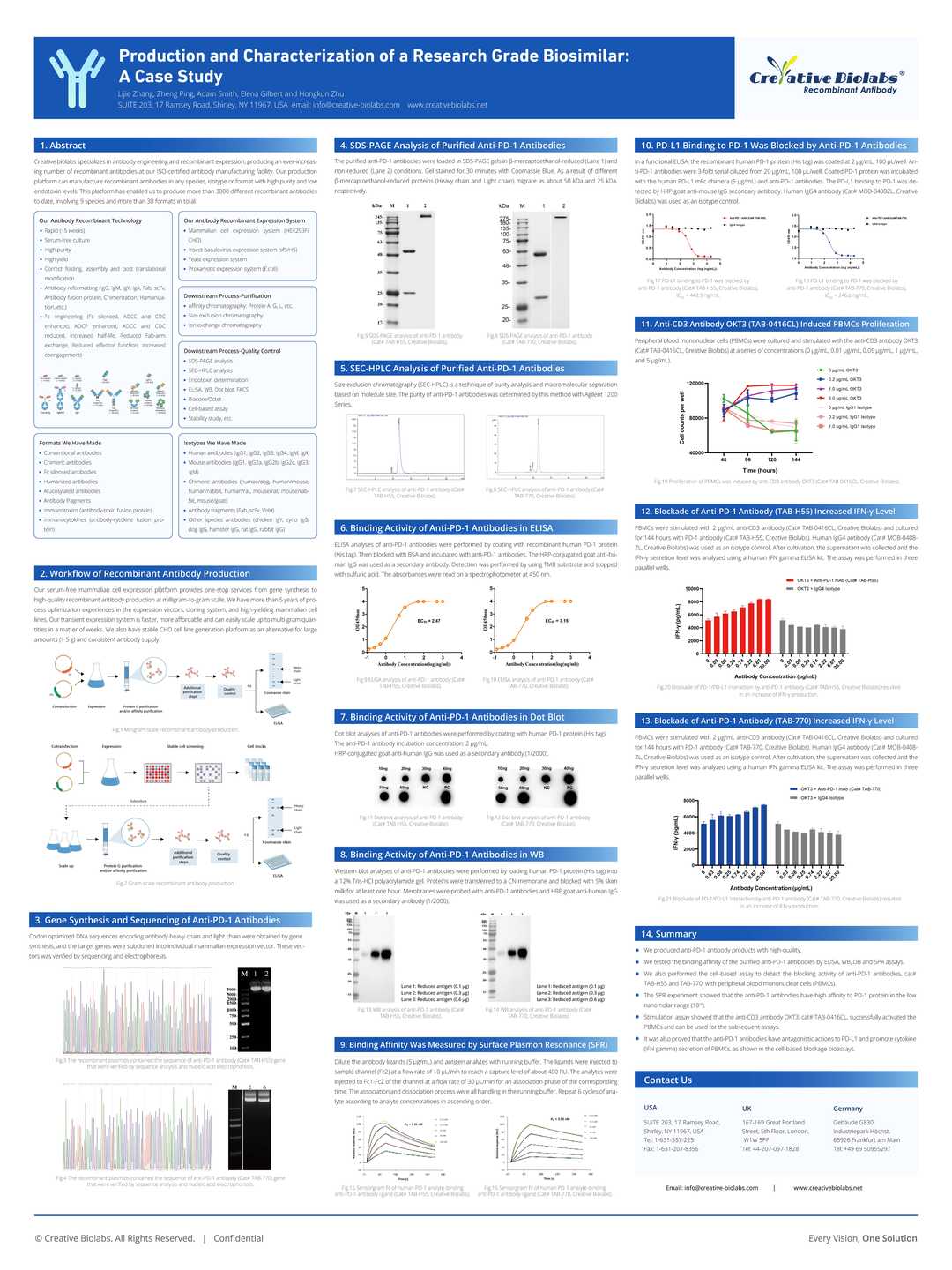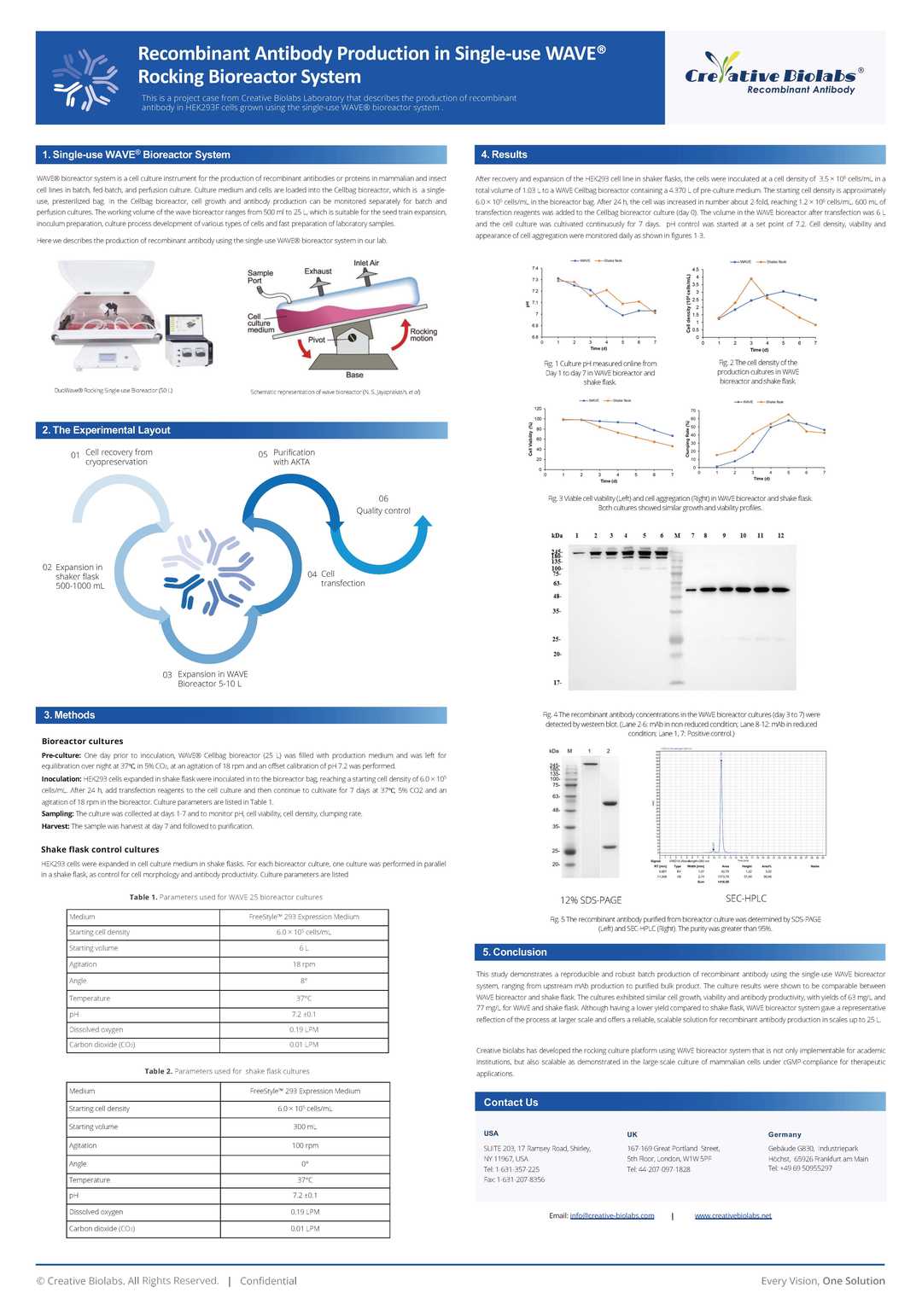Mouse Anti-CSF1R Recombinant Antibody (VS3-CJ465)
CAT#: VS3-CJ465
This product is a mouse antibody that recognizes human CSF1R.







Specifications
- Immunogen
- Recombinant protein
- Host Species
- Mouse
- Type
- Mouse IgG1, κ
- Specificity
- Human CSF1R
- Species Reactivity
- Human
- Applications
- WB, IHC, FC
- Conjugate
- Unconjugated
Product Property
- Purification
- Affinity purified
- Purity
- >95% as determined by SDS-PAGE
- Format
- Liquid
- Buffer
- PBS
- Preservative
- 0.09% Sodium Azide
- Storage
- Store at 4°C for short term. Aliquot and store at -20°C for long term. Avoid repeated freeze/thaw cycles.
Applications
- Application Notes
- This antibody has been tested for use in Western Blot (1:2000), Immunohistochemistry (1:25), Flow Cytometry (1:25).
Target
- Alternative Names
- FMS; CSFR; FIM2; HDLS; C-FMS; CD115; HDLS1; CSF-1R; BANDDOS; M-CSF-R
- Gene ID
- 1436
- UniProt ID
- P07333
- Sequence Similarities
- Belongs to the protein kinase superfamily. Tyr protein kinase family. CSF-1/PDGF receptor subfamily.
- Cellular Localization
- Cell membrane, Membrane
- Post Translation Modifications
- Autophosphorylated in response to CSF1 or IL34 binding (PubMed:24336230, PubMed:20489731, PubMed:23408870).
Phosphorylation at Tyr-561 is important for normal down-regulation of signaling by ubiquitination, internalization and degradation. Phosphorylation at Tyr-561 and Tyr-809 is important for interaction with SRC family members, including FYN, YES1 and SRC, and for subsequent activation of these protein kinases. Phosphorylation at Tyr-699 and Tyr-923 is important for interaction with GRB2. Phosphorylation at Tyr-723 is important for interaction with PIK3R1. Phosphorylation at Tyr-708 is important for normal receptor degradation. Phosphorylation at Tyr-723 and Tyr-809 is important for interaction with PLCG2. Phosphorylation at Tyr-969 is important for interaction with CBL. Dephosphorylation by PTPN2 negatively regulates downstream signaling and macrophage differentiation.
Ubiquitinated. Becomes rapidly polyubiquitinated after autophosphorylation, leading to its degradation.
- Protein Refseq
- NP_001275634.1; NP_005202.2
- Function
- Tyrosine-protein kinase that acts as cell-surface receptor for CSF1 and IL34 and plays an essential role in the regulation of survival, proliferation and differentiation of hematopoietic precursor cells, especially mononuclear phagocytes, such as macrophages and monocytes. Promotes the release of pro-inflammatory chemokines in response to IL34 and CSF1, and thereby plays an important role in innate immunity and in inflammatory processes. Plays an important role in the regulation of osteoclast proliferation and differentiation, the regulation of bone resorption, and is required for normal bone and tooth development. Required for normal male and female fertility, and for normal development of milk ducts and acinar structures in the mammary gland during pregnancy. Promotes reorganization of the actin cytoskeleton, regulates formation of membrane ruffles, cell adhesion and cell migration, and promotes cancer cell invasion. Activates several signaling pathways in response to ligand binding, including the ERK1/2 and the JNK pathway (PubMed:20504948, PubMed:30982609).
Phosphorylates PIK3R1, PLCG2, GRB2, SLA2 and CBL. Activation of PLCG2 leads to the production of the cellular signaling molecules diacylglycerol and inositol 1,4,5-trisphosphate, that then lead to the activation of protein kinase C family members, especially PRKCD. Phosphorylation of PIK3R1, the regulatory subunit of phosphatidylinositol 3-kinase, leads to activation of the AKT1 signaling pathway. Activated CSF1R also mediates activation of the MAP kinases MAPK1/ERK2 and/or MAPK3/ERK1, and of the SRC family kinases SRC, FYN and YES1. Activated CSF1R transmits signals both via proteins that directly interact with phosphorylated tyrosine residues in its intracellular domain, or via adapter proteins, such as GRB2. Promotes activation of STAT family members STAT3, STAT5A and/or STAT5B. Promotes tyrosine phosphorylation of SHC1 and INPP5D/SHIP-1. Receptor signaling is down-regulated by protein phosphatases, such as INPP5D/SHIP-1, that dephosphorylate the receptor and its downstream effectors, and by rapid internalization of the activated receptor. In the central nervous system, may play a role in the development of microglia macrophages (PubMed:30982608).
Customer Review
There are currently no Customer reviews or questions for VS3-CJ465. Click the button above to contact us or submit your feedback about this product.
Submit Your Publication
Published with our product? Submit your paper and receive a 10% discount on your next order! Share your research to earn exclusive rewards.
Downloadable Resources
Download resources about recombinant antibody development and antibody engineering to boost your research.
Product Notes
This is a product of Creative Biolabs' Hi-Affi™ recombinant antibody portfolio, which has several benefits including:
• Increased sensitivity
• Confirmed specificity
• High repeatability
• Excellent batch-to-batch consistency
• Sustainable supply
• Animal-free production
See more details about Hi-Affi™ recombinant antibody benefits.
Datasheet
MSDS
COA
Certificate of Analysis LookupTo download a Certificate of Analysis, please enter a lot number in the search box below. Note: Certificate of Analysis not available for kit components.
Protocol & Troubleshooting
We have outlined the assay protocols, covering reagents, solutions, procedures, and troubleshooting tips for common issues in order to better assist clients in conducting experiments with our products. View the full list of Protocol & Troubleshooting.
Secondary Antibody
- CAT
- Product Name
Recommended Dilution Buffer
- CAT
- Product Name
See other products for "CSF1R"
Select a product category from the dropdown menu below to view related products.
| CAT | Product Name | Application | Type |
|---|---|---|---|
| MOB-1863z | Mouse Anti-CSF1R Recombinant Antibody (clone 32G11) | WB, ELISA, FC, ICC, IF, IHC | Mouse IgG2b |
| HPAB-0574-CN | Mouse Anti-CSF1R Recombinant Antibody (HPAB-0574-CN) | ELISA, Block | Mouse IgG |
| HPAB-0963-FY | Human Anti-CSF1R Recombinant Antibody (HPAB-0963-FY) | WB, FC, ELISA | Human IgG |
| HPAB-0964-FY | Human Anti-CSF1R Recombinant Antibody (HPAB-0964-FY) | WB, FC, ELISA | Human IgG |
| HPAB-0965-FY | Human Anti-CSF1R Recombinant Antibody (HPAB-0965-FY) | WB, FC, ELISA | Human IgG |
| CAT | Product Name | Application | Type |
|---|---|---|---|
| TAB-H23 | Anti-Human CSF1R Recombinant Antibody (TAB-H23) | WB, ELISA, IP, FC, FuncS, Neut, IF | IgG1 - kappa |
| TAB-076MZ | Human Anti-CSF1R Recombinant Antibody (TAB-076MZ) | WB | Human IgG4 |
| TAB-078MZ | Human Anti-CSF1R Recombinant Antibody (TAB-078MZ) | ELISA | Humanized IgG |
| TAB-076MZ-S(P) | Human Anti-CSF1R Recombinant Antibody; scFv Fragment (TAB-076MZ-S(P)) | WB | Human scFv |
| TAB-078MZ-S(P) | Human Anti-CSF1R Recombinant Antibody; scFv Fragment (TAB-078MZ-S(P)) | ELISA | Humanized scFv |
| CAT | Product Name | Application | Type |
|---|---|---|---|
| AFC-178CL | Afuco™ Anti-CSF1R Recombinant Antibody (AFC-178CL), ADCC Enhanced | ELISA, WB | Human IgG1 |
| AFC-TAB-H23 | Afuco™ Anti-CSF1R ADCC Recombinant Antibody, ADCC Enhanced (AFC-TAB-H23) | ELISA, IP, FC, FuncS, Neut | ADCC enhanced antibody |
| AFC-TAB-011ML | Afuco™ Anti-CSF1R ADCC Recombinant Antibody, ADCC Enhanced (AFC-TAB-011ML) | ELISA, IHC, FC, IP, IF, Inhib | ADCC enhanced antibody |
| CAT | Product Name | Application | Type |
|---|---|---|---|
| PSBL-055 | Human Anti-CSF1R Recombinant Antibody (clone RG7155); scFv Fragment | FC, FuncS | Mouse scFv |
| HPAB-0574-CN-S(P) | Mouse Anti-CSF1R Recombinant Antibody; scFv Fragment (HPAB-0574-CN-S(P)) | ELISA, Block | Mouse scFv |
| HPAB-0575-CN-S(P) | Mouse Anti-CSF1R Recombinant Antibody; scFv Fragment (HPAB-0575-CN-S(P)) | ELISA, Block | Mouse scFv |
| HPAB-0576-CN-S(P) | Human Anti-CSF1R Recombinant Antibody; scFv Fragment (HPAB-0576-CN-S(P)) | ELISA, Block | Humanized scFv |
| HPAB-0577-CN-S(P) | Mouse Anti-CSF1R Recombinant Antibody; scFv Fragment (HPAB-0577-CN-S(P)) | ELISA, FC | Mouse scFv |
| CAT | Product Name | Application | Type |
|---|---|---|---|
| PFBL-055 | Human Anti-CSF1R Recombinant Antibody (clone RG7155); Fab Fragment | FC, FuncS | Mouse Fab |
| HPAB-0574-CN-F(E) | Mouse Anti-CSF1R Recombinant Antibody; Fab Fragment (HPAB-0574-CN-F(E)) | ELISA, Block | Mouse Fab |
| HPAB-0153-FY-F(E) | Human Anti-CSF1R Recombinant Antibody; Fab Fragment (HPAB-0153-FY-F(E)) | ELISA | Humanized Fab |
| HPAB-0177-FY-F(E) | Human Anti-CSF1R Recombinant Antibody; Fab Fragment (HPAB-0177-FY-F(E)) | Block | Humanized Fab |
| HPAB-J0063-YC-F(E) | Human Anti-CSF1R Recombinant Antibody; Fab Fragment (HPAB-J0063-YC-F(E)) | ELISA, FC, IHC, Inhib, ADCC, FuncS | Humanized Fab |
| CAT | Product Name | Application | Type |
|---|---|---|---|
| TAB-077MZ | Mouse Anti-CSF1R Recombinant Antibody (TAB-077MZ) | ELISA | Mouse IgG2a, κ |
| TAB-079MZ | Anti-Mouse CSF1R Recombinant Antibody (AFS98) | FC | |
| TAB-077MZ-S(P) | Mouse Anti-CSF1R Recombinant Antibody; scFv Fragment (TAB-077MZ-S(P)) | ELISA | Mouse scFv |
| TAB-077MZ-F(E) | Mouse Anti-CSF1R Recombinant Antibody; Fab Fragment (TAB-077MZ-F(E)) | ELISA | Mouse Fab |
| CAT | Product Name | Application | Type |
|---|---|---|---|
| NEUT-508CQ | Mouse Anti-CSF1R Recombinant Antibody (clone CBL141) | Neut, WB | Mouse IgG1 |
| NEUT-509CQ | Mouse Anti-CSF1R Recombinant Antibody (clone CBL809) | WB, Neut | Mouse IgG1 |
| NEUT-510CQ | Mouse Anti-CSF1R Recombinant Antibody (clone MM0467-5V36) | WB, Neut | Mouse IgG1 |
| CAT | Product Name | Application | Type |
|---|---|---|---|
| MOR-0825 | Hi-Affi™ Rabbit Anti-CSF1R Recombinant Antibody (clone DS825AB) | ELISA | Rabbit IgG |
| MOR-4112 | Hi-Affi™ Rabbit Anti-CSF1R Recombinant Antibody (clone SI183DS) | ELISA | Rabbit IgG |
| CAT | Product Name | Application | Type |
|---|---|---|---|
| VS-0425-FY97 | Human Anti-CSF1R (clone RG7155) scFv-Fc Chimera | FC | Human IgG1, scFv-Fc |
| CAT | Product Name | Application | Type |
|---|---|---|---|
| VS-0425-YC551 | Recombinant Anti-CSF1R Vesicular Antibody, EV Displayed (VS-0425-YC551) | ELISA, FC, Neut, Cell-uptake |
| CAT | Product Name | Application | Type |
|---|---|---|---|
| VS-0525-XY1705 | Anti-CSF1R Immunohistochemistry Kit | IHC | |
| VS-0525-XY1706 | Anti-Mouse CSF1R Immunohistochemistry Kit | IHC |
| CAT | Product Name | Application | Type |
|---|---|---|---|
| VS-0825-YC84 | SmartAb™ Recombinant Anti-CSF1R pH-dependent Antibody (VS-0825-YC84) | WB, ELISA, IP, FC Neut, IF | Human IgG1 kappa |
Popular Products

Application: ELISA, IP, FC, FuncS, Neut, IF, IHC

Application: IF, IP, Neut, FuncS, ELISA, FC, WB

Application: FuncS, IF, Neut, ELISA, FC, IP, ICC

Application: WB, ELISA, FuncS

Application: SPR, Inhib, FuncS

Application: FC, IA, IF, IP, IHC, FuncS

Application: Neut, ELISA, IF, IP, FuncS, FC
-2.png)
Application: ELISA

Application: ELISA, FuncS

Application: ELISA, FC, FuncS

Application: ELISA, Neut
For research use only. Not intended for any clinical use. No products from Creative Biolabs may be resold, modified for resale or used to manufacture commercial products without prior written approval from Creative Biolabs.
This site is protected by reCAPTCHA and the Google Privacy Policy and Terms of Service apply.























